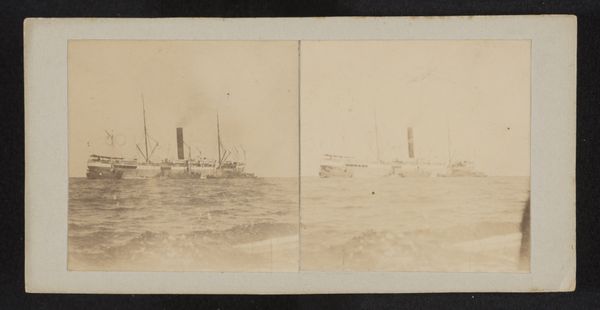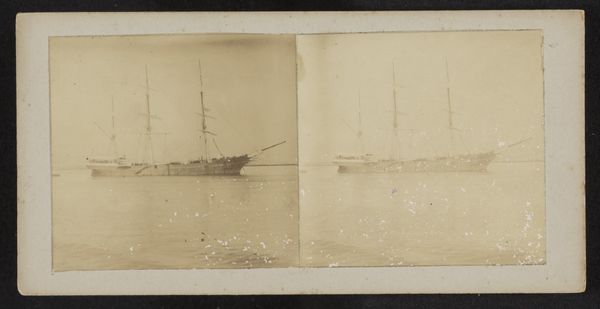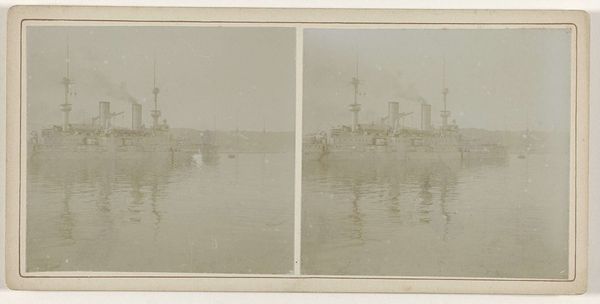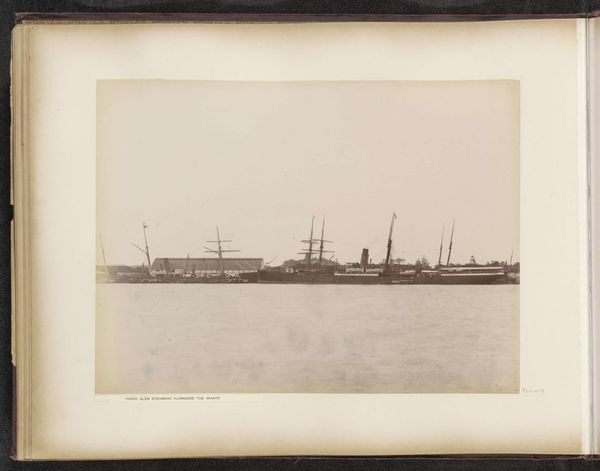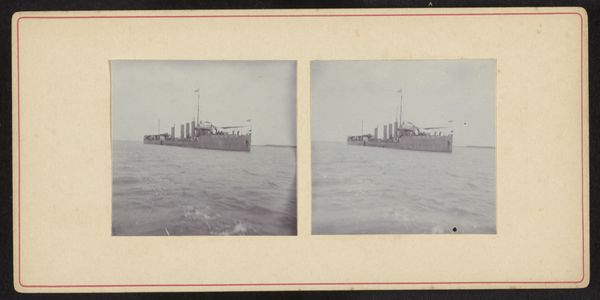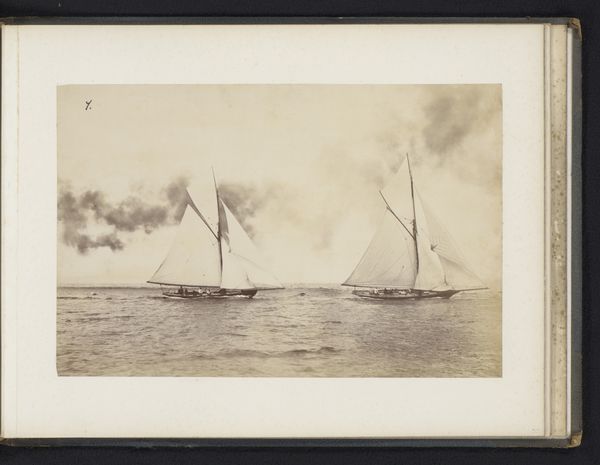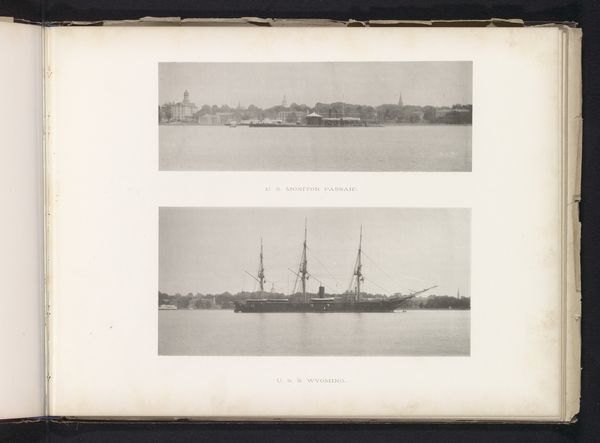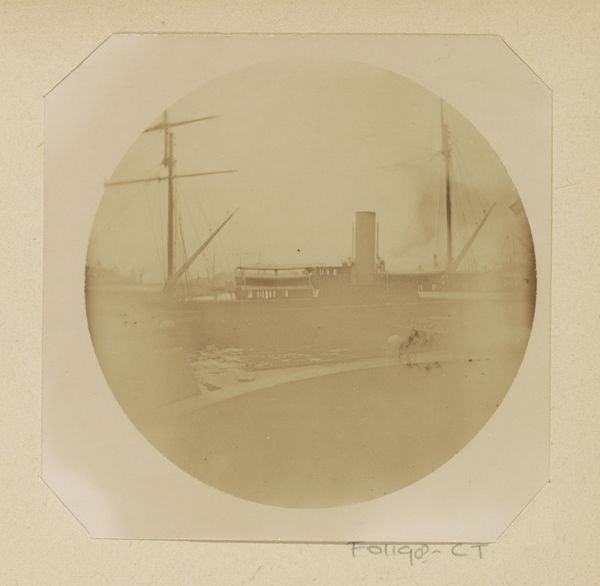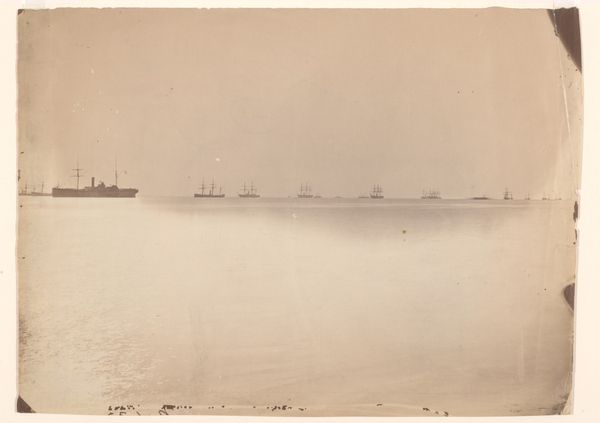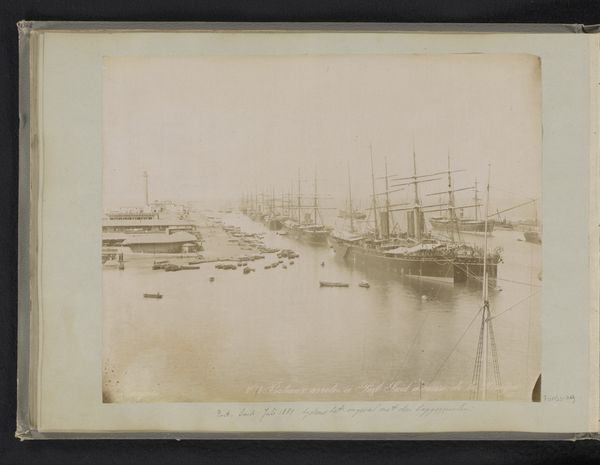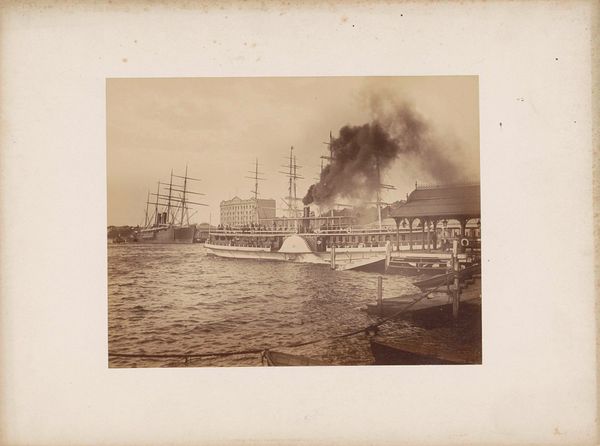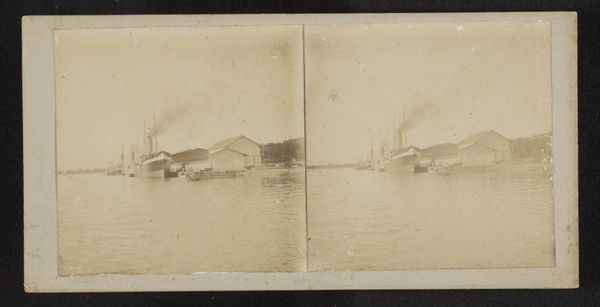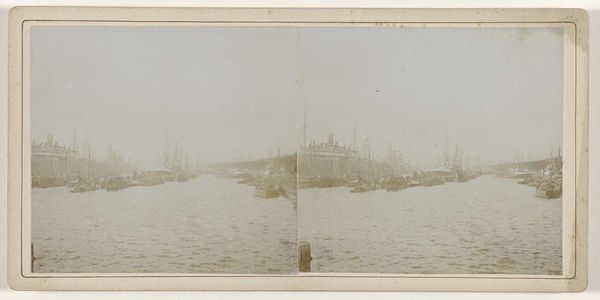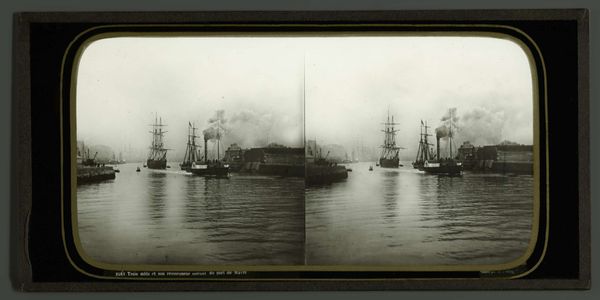
#
pencil drawn
#
amateur sketch
#
light pencil work
#
pencil sketch
#
incomplete sketchy
#
underpainting
#
watercolour bleed
#
watercolour illustration
#
tonal art
#
watercolor
Dimensions: height 77 mm, width 77 mm, height 88 mm, width 178 mm
Copyright: Rijks Museum: Open Domain
Curator: This work is entitled "De Gelderland," created by Robert Julius Boers around 1900. It currently resides here at the Rijksmuseum. The image is created with watercolor on paper. Editor: The immediate impression is of a sepia-toned world, divided into a stereoscopic view. There is a certain incompleteness. The use of light watercolor evokes both distance and a tangible sense of watery atmosphere. Curator: Let's look closely at this composition, and break it down formally. The structure of the piece presents the vessel twice, allowing for study and inviting an almost analytical approach to its presentation. Boers has presented this ship in two slightly different states, perhaps suggesting motion. Editor: It evokes a bygone era. Consider the warship itself – a symbol of Dutch naval power at the turn of the century, safeguarding trade routes and projecting colonial authority. This type of ship embodies ideas of control and dominion that resonated deeply at the time. Curator: Indeed. We should note how the medium affects the perception; the subdued palette mutes the bold militaristic associations, introducing a melancholic register into the imagery. Editor: Agreed. The muted tones speak to memory, making the scene about more than just the presence of the vessel. Ships are liminal objects. They exist between places, so there's a romantic symbolism, a gateway to something else. The ships stand as vessels carrying cargo across continents and time. Curator: You're making me consider that there is more to these images than meets the eye. The tonal gradation from light to dark, is quite compelling from a structural view. The materiality invites further contemplation of technique and affect. Editor: Exactly. Beyond their literal function, warships embodied the national ego. I find this work strangely poignant because it’s a gentle ghost of those past ambitions. Curator: It's interesting how Boers creates something ephemeral and somehow ambiguous from this strong symbol. I found a different point of view by listening to the semiotic elements. Editor: Yes, now seeing this gentle presentation invites empathy towards a history loaded with naval presence and all that symbolizes.
Comments
No comments
Be the first to comment and join the conversation on the ultimate creative platform.
